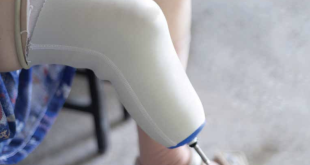What is diabetic foot?
When a diabetic person develops an ulceration in his or her foot as a significant and devastating complication of the disease, it is known as a diabetic foot. Nearly 12 – 15% of the population with diabetes develop the foot ulcer in his/her lifetime, and is the main reason for needing amputation (accounting for nearly 85% of amputation cases of the lower limb).
Why is the diabetic foot so highlighted?
Globally, 415 million people have diabetes, which means one in 11 people have acquired this disease. Thus, it is also described as a global epidemic. Due to decreased physical activity, increased prevalence of obesity, and advancing age of the population, the incidence of type 2 diabetes mellitus has increased, and with it, the associated complications. The complications are not only associated with the duration of the disease, but also on the level of chronic glycemia, which is best measured by glycosylated hemoglobin assay (HbA1c level). Diabetic foot ulcers increase morbidity and incurs high expenditure for its management, besides preceding amputation in nearly 85% of diabetic patients. However, almost 49 – 85% of all diabetic foot ulcers are preventable.
What are the risk factors of diabetic foot?
As per recent studies, there are multiple risk factors associated with the development of diabetic foot ulcers. These are listed as below:
a. Duration of diabetes > 10 years
b. High body mass index (obesity)
c. Uncontrolled hyperglycemia
d. Older age
e. Peripheral vascular disease
f. Peripheral neuropathy
g. Chronic renal disease
h. Retinopathy
i. Structural foot deformity
j. Trauma or ill-fitted shoes
k. Callus formation
l. Prolonged elevated pressures in foot
m. Limited joint mobility
n. History of prior ulcer or amputation
How does diabetic foot occur?
Till date, most diabetic foot ulcers have been found to be due to neuropathic or ischemic (peripheral vascular disease) causes, or combined neuro-ischemic abnormalities. About 90% of ulcers are due to neuropathy alone or with ischemia, while only 10% is purely due to ischemia. Peripheral sensorimotor and autonomic neuropathy is the most common pathway for development of diabetic foot ulcers.
How to evaluate and determine the severity of a diabetic foot?
There are several classification systems that are in use to evaluate and determine the severity of the diabetic foot. They include the Wagner system, Brodsky depth-ischemic classification, University of Texas System, and PEDIS system.
The most commonly used is the Wagner-Meggitt classification system, in which different grades, ranging from 0 to 5, are designated for high-risk foot with no active lesion, to gangrene of entire foot. Figure 2 demonstrates the grades of the classification.
How can we prevent diabetic foot ulcer?
As already mentioned, 49 – 85% of all diabetic foot related problems are preventable. This can be achieved by educating diabetic patients on taking good care of the feet and controlling blood sugar to the optimum level.
Daily inspection of feet by the patient or a family member or care provider is the most important part, followed by early attendance, with seriousness, of any wounds, injuries, infections, and sores. Regular and gentle cleansing with soapy water, followed by the application of topical moisturizers, not only keeps the feet healthy, but also helps to prevent breakdown and injury. Properly-fitting shoes with adequate support should be worn, and in case of foot deformities or special support needs, custom shoes should be considered. Minor wounds and injuries should be gently cleansed and treated with topical antiseptics. Minor wounds not healing quickly, or infections and sores, should be shown to the physician, and proper treatment should be initiated early.
The standard of care in diabetes management is self-monitoring of blood glucose, and the frequency of monitoring should be individualized and adapted to address the goals of diabetes care. The desired long-term glycemic control is assessed by measuring the glycated hemoglobin (HbA1c). The goal is to achieve HbA1c with the target of <7%, fasting level of plasma glucose 4.4 – 7.2mmol/L(80 – 130 mg/dL), and post-prandial plasma glucose < 10.0 mmol/L (<180 mg/dL).
How is diabetic foot ulcer managed?
The lifestyle should be changed, with daily foot examination and care, cessation of smoking, and using special footwear. Daily charting of the ulcer size to study progress should be done once the ulcer develops. The ulcer should be managed with offloading by using wheelchair, crutches, walkers, removable devices, or more of bed rest and lengthening of the tendo-achilles tendon, in case of tendon tightening.
Once infection is noted, it should be differentiated whether only the soft tissue is involved, or the bone is already involved. The necrosed or dead tissue should be debrided, and proper antibiotics and measures to cover the wound should be sought as early as possible.
The main motto in proper management of the diabetic foot ulcer is not to ignore, and to seek help as early as possible from the expert.
 Medicosnext
Medicosnext




